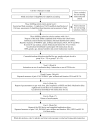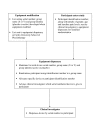The effectiveness of pulsed electrical stimulation (E-PES) in the management of osteoarthritis of the knee: a protocol for a randomised controlled trial
- PMID: 18241355
- PMCID: PMC2275728
- DOI: 10.1186/1471-2474-9-18
The effectiveness of pulsed electrical stimulation (E-PES) in the management of osteoarthritis of the knee: a protocol for a randomised controlled trial
Abstract
Background: Osteoarthritis (OA) of the knee is one of the main causes of musculoskeletal disability in the western world. Current available management options provide symptomatic relief (exercise and self-management, medication and surgery) but do not, in general, address the disease process itself. Moreover, adverse effects and complications with some of these interventions (medication and surgery) and the presence of co-morbidities commonly restrict their use. There is clearly a need to investigate treatments that are more widely applicable for symptom management and which may also directly address the disease process itself. In two randomised controlled trials of four and 12 weeks duration, pulsed electrical stimulation was shown to be effective in managing the symptoms of OA of the knee. Laboratory and animal studies demonstrate the capacity of externally applied electric and electromagnetic fields to positively affect chondrocyte proliferation and extracellular matrix protein production. This latter evidence provides strong theoretical support for the use of electrical stimulation to maintain and repair cartilage in the clinical setting and highlights its potential as a disease-modifying modality.
Methods/design: A double-blind, randomised, placebo-controlled, repeated measures trial to examine the effectiveness of pulsed electrical stimulation in providing symptomatic relief for people with OA of the knee over 26 weeks. Seventy people will be recruited and information regarding age, gender, body mass index and medication use will be recorded. The population will be stratified for age, gender and baseline pain levels. Outcome measures will include pain (100 mm VAS and WOMAC 3.1), function (WOMAC 3.1), stiffness (WOMAC 3.1), patient global assessment (100 mm VAS) and quality of life (SF-36). These outcomes will be measured at baseline, four, 16 and 26 weeks. Activity levels will be measured at baseline and 16 weeks using accelerometers and the Human Activity Profile questionnaire. A patient global perceived effect scale (11-point Likert) will be completed at 16 and 26 weeks.
Discussion: This paper describes the protocol for a randomised, double-blind, placebo-controlled trial that will contribute to the evidence regarding the use of sub-sensory pulsed electrical stimulation in the management of OA of the knee.
Trial registration: Australian Clinical Trials Registry ACTRN12607000492459.
Figures


References
-
- Baker CL, Ferguson CM. Future treatment of osteoarthritis. Orthopaedics. 2005;28:227–234. - PubMed
-
- Clegg DO, Reda DJ, Harris CL, Klein MA, O'Dell JR, Hooper MM, Bradley JD, Bingham CO, III, Weisman MH, Jackson CG, Lane NE, Cush JJ, Moreland LW, Schumacher HR, Jr, Oddis CV, Wolfe F, Molitor JA, Yocum DE, Schnitzer TJ, Furst DE, Sawitzke AD, Shi H, Brandt KD, Moskowitz RW, Williams HJ. Glucosamine, chondroitin sulfate, and the two in combination for painful knee osteoarthritis. New England Journal of Medicine. 2006;354:795–808. doi: 10.1056/NEJMoa052771. - DOI - PubMed
-
- Reginster JY, Deroisy R, Rovati LC, Lee RL, Lejeune E, Bruyere O, Giacovelli G, Henrotin Y, Dacre JE, Gossett C. Long-term effects of glucosamine sulphate on osteoarthritis progression: a randomised, placebo-controlled clinical trial. Lancet. 2001;357:251–256. doi: 10.1016/S0140-6736(00)03610-2. - DOI - PubMed
Publication types
MeSH terms
LinkOut - more resources
Full Text Sources
Other Literature Sources

